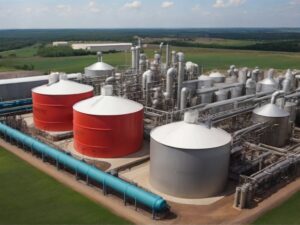Welcome to the Intrinsically Safe Store, your one-stop-shop for all things related to safety in hazardous environments. We are dedicated to providing you with the most up-to-date and relevant information on electrical component design for hazardous locations. In this article, we will delve into the differences between Class 1 Division 1 and Division 2 electrical component design. So, let’s get started, and don’t forget to visit our website for more information.
Understanding Class 1 Divisions
Before we delve into the specifics of electrical component design, it’s crucial to understand what Class 1 Divisions mean. The National Electrical Code (NEC) categorizes hazardous locations into Classes, Divisions, and Groups based on the nature and degree of the risk. Class 1 locations are areas where flammable gases or vapors are or may be present in the air in quantities sufficient to produce explosive or ignitable mixtures.
- Division 1: This division covers areas where hazardous conditions are continuously present, intermittently present under normal operating conditions, or could become hazardous due to equipment failure or abnormal operation.
- Division 2: This division applies to locations where hazardous conditions are not normally present but could become hazardous due to a rupture or breakdown of containment systems.

Electrical Component Design for Class 1 Division 1
Electrical components designed for Class 1 Division 1 (C1D1) environments must be intrinsically safe. This means they must be incapable of releasing sufficient electrical or thermal energy to ignite a hazardous atmospheric mixture. These components often use explosion-proof enclosures that can contain an internal explosion without allowing it to ignite the surrounding atmosphere.
Electrical Component Design for Class 1 Division 2
In Class 1 Division 2 (C1D2) environments, we do not necessarily need to make the electrical components intrinsically safe. However, we must design them to prevent normal operation or expected malfunctions from causing ignition. We can achieve this through various methods, such as using non-incendive components, hermetically sealed components, or purging and pressurizing systems.
Comparing C1D1 and C1D2 Component Design
Designers create both C1D1 and C1D2 components to prevent ignition in hazardous environments, but the key difference lies in the degree of safety required. Designers must construct C1D1 components to prevent ignition even in the event of rare equipment failures, whereas they only need to design C1D2 components to prevent ignition during normal operation and expected malfunctions.
Case Study: Intrinsically Safe Store Solutions
At the Intrinsically Safe Store, we offer a wide range of products designed for both C1D1 and C1D2 environments. For example, our intrinsically safe smartphones and tablets are certified for use in C1D1 environments, providing reliable communication tools for workers in these hazardous locations. On the other hand, our non-incendive lighting solutions are perfect for C1D2 environments, offering safe and efficient lighting options.
Navigating Class 1 Division 1 and Division 2 Electrical Component Design
Understanding the differences between Class 1 Division 1 and Division 2 electrical component design is crucial for ensuring safety in hazardous environments. While both divisions require components to prevent ignition, the degree of safety required varies. At the Intrinsically Safe Store, we are committed to providing you with the right solutions for your specific needs. So, don’t hesitate to contact us for more information or assistance in selecting the right products for your hazardous location.


